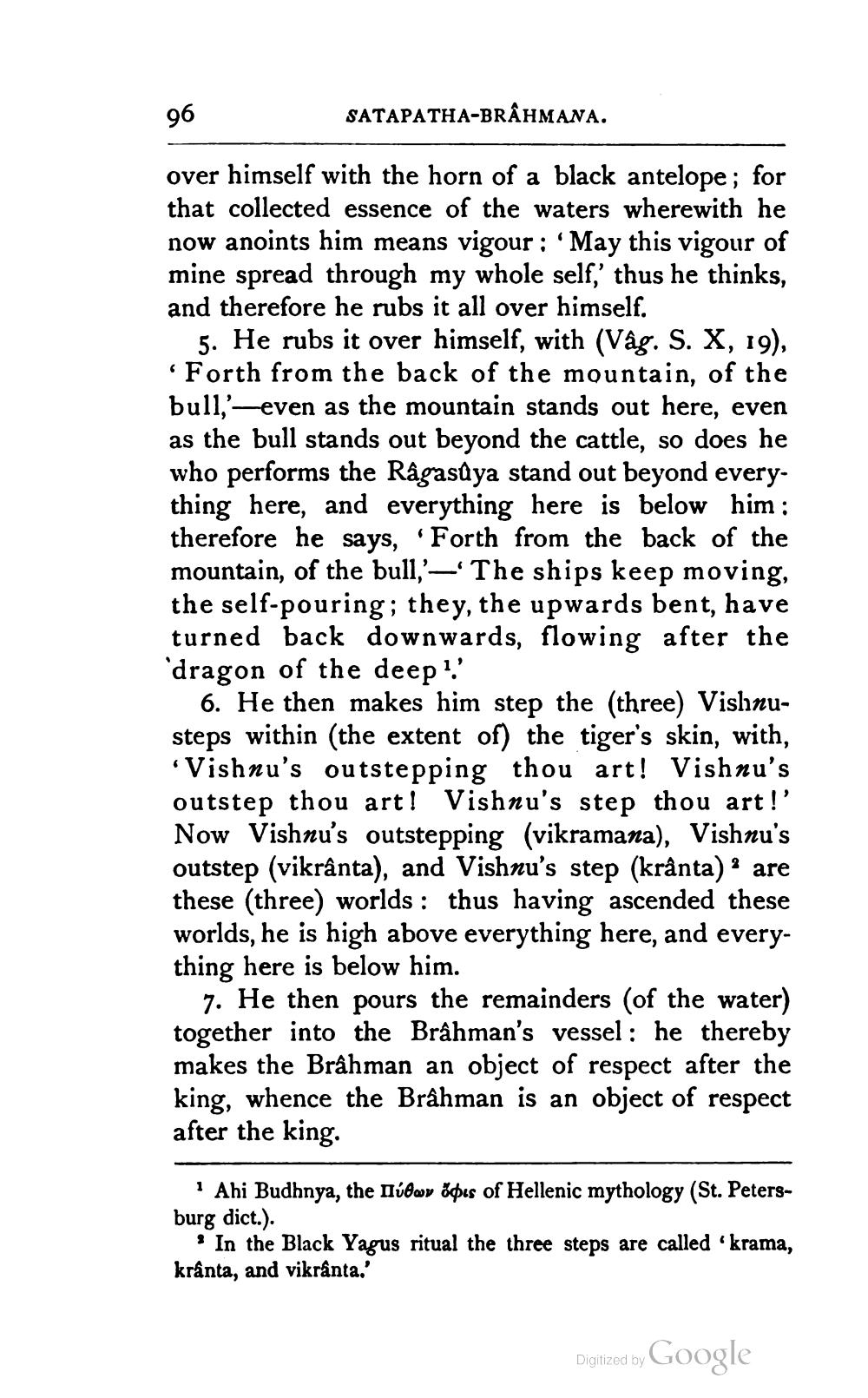________________
96
SATAPATHA-BRAHMANA.
over himself with the horn of a black antelope; for that collected essence of the waters wherewith he now anoints him means vigour: 'May this vigour of mine spread through my whole self,' thus he thinks, and therefore he rubs it all over himself.
5. He rubs it over himself, with (Vâg. S. X, 19), 'Forth from the back of the mountain, of the bull,''-even as the mountain stands out here, even as the bull stands out beyond the cattle, so does he who performs the Râgasûya stand out beyond everything here, and everything here is below him: therefore he says, 'Forth from the back of the mountain, of the bull,'-' The ships keep moving, the self-pouring; they, the upwards bent, have turned back downwards, flowing after the 'dragon of the deep'.'
6. He then makes him step the (three) Vishnusteps within (the extent of) the tiger's skin, with, 'Vishnu's outstepping thou art! Vishnu's outstep thou art! Vishnu's step thou art!' Now Vishnu's outstepping (vikramana), Vishnu's outstep (vikrânta), and Vishnu's step (krânta) are these (three) worlds: thus having ascended these worlds, he is high above everything here, and everything here is below him.
7. He then pours the remainders (of the water) together into the Brâhman's vessel: he thereby makes the Brahman an object of respect after the king, whence the Brâhman is an object of respect after the king.
1 Ahi Budhnya, the Пúdov opis of Hellenic mythology (St. Petersburg dict.).
In the Black Yagus ritual the three steps are called 'krama, krânta, and vikrânta.'
Digitized by Google




